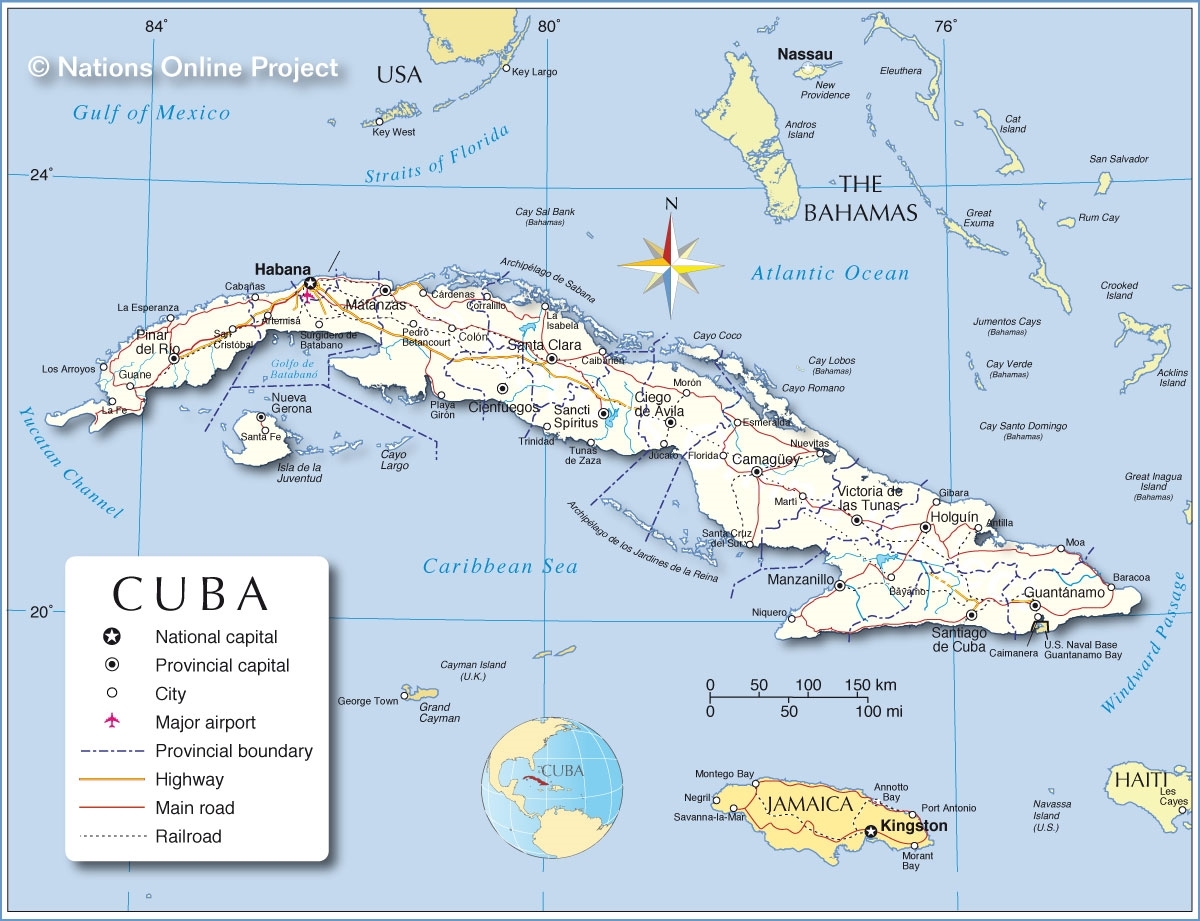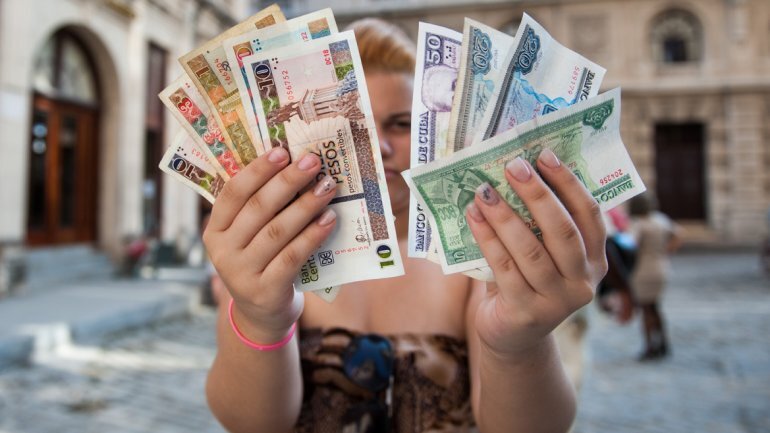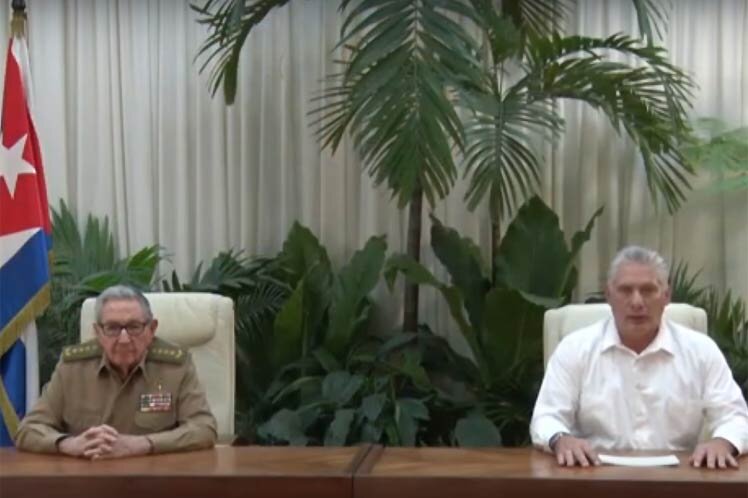Cuba To Unify Currencies; Result Could Present Opportunities For Biden Administration And U.S. Companies
/If President Miguel Diaz-Canel of the Republic of Cuba had to select one item from a list of priorities for his term in office, it would be merging of the currencies and implementation of a single floating exchange rate. While the necessary pain to the population would not be avoidable, the result would revive the interest by companies in Cuba's marketplace.
If the Diaz-Canel Administration can successfully implement a unification and devaluation, sources for Direct Foreign Investment (DFI) will be supportive, as will governments; and United States companies will remain idled, but ready when opportunities emerge.
As the Republic of Cuba implements commercial, economic and political changes, particularly those which it would rather not accept- those identified as lessening the control of the government, specifically the military, the incoming Biden Administration will have increased opportunities to respond and to initiate supportive measures.
The decision by President Diaz-Canel to merge the currencies and eliminate multiple exchange rates may result in him serving a single term due to the pain inflicted upon the population- if so, this decision would be worth it for the country and helpful for his legacy.
Prensa Latina
Havana, Republic of Cuba
10 December 2020
“Havana, Dec 10 (Prensa Latina) The regular Cuban peso (CUP) will remain as the island's official currency at an exchange rate initially of 24 to one US dollar as part of an overhaul of the economy, President Miguel Diaz-Canel announced today in a special message to the nation.
In a radio and television hookup tonight, Diaz-Canel accompanied by Army General and First Secretary of the Cuban Communist Party, Raul Castro, said that the plan to unify the Cuban currency will kick off on January 1, 2021.
For a little more than 20 years Cubans have had two currencies, the CUP and the convertible peso (CUC) that was introduced in the late 90's for all national transactions, but this two-teer monetary system became a burden for the necessary boosting of the economy, economists and officials have been upholding for some time. To cushion the impact on the people of the monetary unification, State officials have been telling the nation lately that the process to do away with the CUC will take six months. The President assured that people's resources in CUC either in hand or in saving bank accounts will be respected at the current exchange rate, which is 24 CUPs to one CUC.
Faced with a tough economic and financial crisis due to the effects of the Covid-19 pandemic, worsened by a hardened US blockade, the Cuban Government opened retail shops in hard currency with the use of personal banking cards in an effort to collect foreign monetary assets. The monetary unification is part of a broader program, known as economic reordering, that envisions, too, a wage rise, price hike, tariff increase, change in subsidy plans, among other economic measures designed to respond to Cuba's reality and boost the economy and development.
Diaz-Canel stressed that the Cuban State will not neglect any of the country's citizens, asserting welfare programs and social plans will be in place to help those with less monetary income. He further said tough sanctions will be imposed on those who manipulate and speculate with prices and illicit money changing. Before winding down his message, the President announce that further information will be provided to the nation from ministers in coming days.”
11 December 2020: HAVANA (Reuters) - The Cuban government announced on Thursday it would start a long-awaited monetary reform in January, unifying its dual currency and multiple exchange rate system in a bid to bring more dynamism to its centrally planned economy. The reforms were first adopted by the Communist Party a decade ago as it moved toward a more market driven system and closer links with the international economy but foundered thanks to bureaucracy and internal divisions.
HOW DOES CUBA’S MONETARY SYSTEM WORK?
For nearly three decades, two currencies have circulated in Cuba: the peso and the convertible peso (CUC), both officially valued at one-to-one with the dollar. Neither are tradable outside the country.
The currencies are exchanged at various rates: one-to-one for state-owned businesses, 24 pesos for 1 CUC for the public and others for joint ventures, wages in the island’s special development zone and transactions between farmers and hotels.
Cuba created the system as part of a package of measures to open up its economy after the collapse of the Soviet Union. While the system helped Cuba get through the shock of the Soviet collapse, it ended up also hiding the real economic situation.
WHAT CHANGES NOW?
The CUC will be eliminated. President Miguel Diaz-Canel said it would leave the peso at a single fixed rate of 24 to the dollar, scrapping other more favorable rates in the first official devaluation of the peso since Cuba’s 1959 revolution.
GOODBYE CUC, HELLO DOLLAR!
The government has also begun opening stores that sell consumer goods for dollars and other traded currencies, though only with a bank card. Havana says this is a temporary measure but the partial dollarization will also provide some stability, especially for families who receive remittances. Meanwhile, state and private companies can now keep tradable currency accounts with up to 80% of their export earnings instead of handing them over to the state.
SHOCK THERAPY?
Devaluation is inflationary, while ending subsidies leads to layoffs, yet the Cuban government says it expects to avoid any “shock therapy” in the economy where the state sets most prices and wages.
Economists expect triple digit inflation, and the government has said the initial devaluation will be accompanied by a five-fold increase in average state wages and pensions even as many state-controlled prices also may rise. But the wage increase does not apply to around 2 million of the 7 million plus labor force in the private sector, informal sector or who simply do not work. Meanwhile the government says state-run companies, as a rule, will no longer be subsidized.
Cuban economists estimate around 40% of state companies operate at a loss and though some will benefit with the reform, others will go under. Still, the government says some companies will be given a year to get their books in order before ending subsidies.
The government says residents will be given 180 days to exchange convertible pesos once they are taken out of circulation.
WHY NOW?
Cuba is seeking to reverse its worst crisis since the fall of the Soviet Union, with growth seen plummeting more than 8% this year by boosting business conditions and productivity. The country is dependent on imports for more than 50% of food and fuel, plus inputs for agriculture and pharmaceuticals. Yet a combination of U.S. sanctions, local economic blunders and the COVID-19 pandemic have gutted Cuba’s ability to earn tradable currency. Cuba has been rapidly piling up debt in recent years, while still being plagued by a scarcity of basic goods, from food and personal hygiene products to medicine and fuel.
Radio Cadena Agramonte
Camaguey, Republic of Cuba
11 December 2020
Havana, Dec 11. - In accordance with the new economic context of the country as of January 1, 2021, the Ministry of Finance and Prices modified the country's salary scale, setting the minimum wage at 2,100 Cuban pesos.
Resolution 29 of the body, published this Thursday in the Extraordinary Gazette 69, establishes for complexity group I a scale salary of 2,100 pesos for those who work 44 hours a week and 1,910 for those who do 40 hours.
In the case of those who are in the last group of complexity (XXXII), they will charge 9,510 pesos and 8,645, respectively.
The occupations of service workers will be located from group I to VI (from two thousand one hundred / thousand 910 pesos to two thousand 660 / two thousand 415 pesos); those of administrative workers, from groups III to VII (from 2,300 / 2,090 to 2,810 / 2,555 pesos); and the workers, from groups II to VIII (from 2,200 / 2,000 to 2,960 / 2,690 pesos).
In the case of technical positions, they will be from group VII to XXV (from two thousand 810 / two thousand 555 pesos to six thousand 610 / six thousand 010 pesos); and the positions of cadres from group XVII to XXXII (from 4,610 / 4,190 to 9,510 / 8,645 pesos).
It is established that recent graduates during the period of fulfillment of the Social Service, when they do not occupy places, will receive, if they have a Middle Upper level, two thousand 810 / two thousand 555 pesos; with a Superior Technician, 3,610 / 3,280; and university graduates, three thousand 810 / three thousand 465 pesos.
The regulations regulate that additional monthly payments for abnormal working conditions (CLA) are maintained, as regulated in specific regulations; for working night and mixed shifts; for holding the category of Master's Degree or equivalent Specialty recognized by the Ministry of Higher Education (440 pesos) and for the scientific degree of Doctor (825 pesos), which are received for a single degree, provided that the professionals hold a position with college level requirements.
In addition, the coefficient of social economic interest of 30% of the basic salary for workers who work in the municipality of Caimanera, province of Guantánamo continues; for professions that are internationally certified (685 pesos) and for teaching Public Health, for doctors, stomatologists and other professionals who do not occupy teaching positions.
The payment systems that apply to all workers in the budgeted sector, with the exception of those approved for the production and realization of Radio and Television programs, animation studios and in the process of making audiovisual works, are annulled. those that are adapted, according to specific standards.
Likewise, the payment for irregular hours is maintained for a day of 240 hours per month for drivers, who, due to the characteristics of the work they perform, regularly work more than eight hours a day.
Income received by workers in amounts greater than those resulting from the increase provided, while they remain in the position they hold at the time of the application of the general wage reform, are exceptionally maintained.
Resolution 30, for its part, establishes the salary system for workers of the local organs of People's Power and their assigned and subordinate budgeted units; number 31, for those who work in branch schools and training centers; and 32 fixes the complexity groups of the technical positions of the National Audit System.
Regulation 34 specifies the salary organization for those who work in journalistic positions in the press organs and in other publications not considered as such; section 35 refers to these aspects in the general and secondary education system; 36, in Higher Education; and 37, in the National Health System.
Resolution 38 organizes the payment of the basic monthly income to the High Performance athletes of the national sports preselection, members of the participating teams of the National Baseball Series and their reserves, hired according to the sports category established by the National Sports Institute., Physical Education and Recreation; while 39 is aimed at workers in the Science, Technology and Innovation activity.
The salary of the artists subsidized in the manifestations of music, shows, theater, dance, circus, cinema and animation, who have a working relationship in the systems of Culture, Radio and Television, Tourism, Public Health and other authorized entities, is found regulated in provision 43.
Meanwhile, 45, establishes the salaries of the personnel that are part of the endowments of ships and vessels for international voyage navigation, cabotage and those that carry out their activities near the coast and in inland waters, owned or operated by the companies, budgeted units and other entities of the organisms of the Central State Administration and the local organs of the People's Power.
They will increase pensions in Cuba
The Cuban Government increased to 1,528 the minimum pension for age and total disability of the General Social Security Regime, as of January 1, 2021, as part of the transformation in the distribution of the population's income in relation to wages, pensions and social assistance benefits in the context of the country's monetary system.
The Official Gazette of the Republic of Cuba in its extraordinary edition number 69 publishes resolution 28 of the Ministry of Labor and Social Security, which establishes an increase of 5.45 times to the current amount of the minimum pension for age and total disability of the General Social Security Regime, and special regimes of the Ministries of the Revolutionary Armed Forces and the Interior.
The legal norm specifies that the increase in pensions for death granted prior to the entry into force of this Resolution, is made on the amount of the deceased, and the beneficiary is granted the part that belongs to him, as established in the Law 105 "On Social Security", of December 27, 2008.
It adds that for pensioners who are entitled to more than one social security pension, the increase is made on the amount of the unified pension.
The pensions granted by the General Social Security Scheme are increased in correspondence with the following scale:
Amount of General Regime
Amount of current pension
Pension amount
Up to 160 pesos
280-300 pesos
1528
From 161 to 210 pesos
320 pesos
1578
From 211 to 250 pesos
350 pesos
1628
From 251 to 399 pesos
385-445 pesos
1678
From 401 to 499 pesos
446-500 pesos
1733



